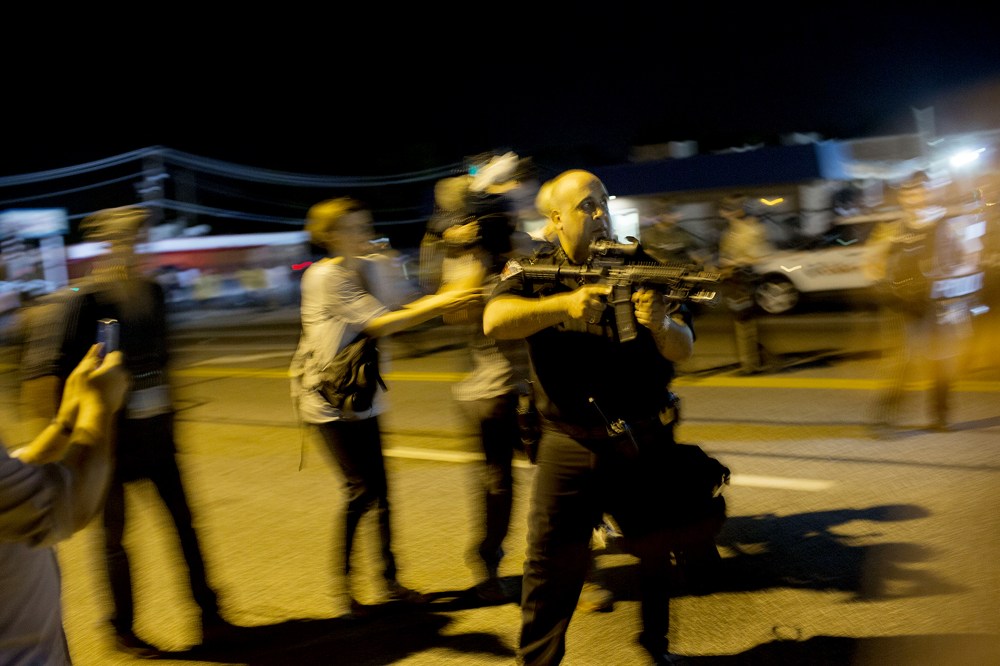A new report on the protests in Ferguson, Missouri following the Aug. 9 death of unarmed black teen Michael Brown has outlined more than 50 allegations of violations of press freedom.
RELATED: Tales of employment woe plague some Ferguson protesters
The alleged incidents outlined in the report, titled “Press Freedom Under Fire In Ferguson,” include journalists being arrested, threatened verbally and physically, and being tear-gassed while covering the protests, according to the PEN American Center, which released its findings on Monday.
The organization, a group that defends freedom of expression and press rights, is calling on the Justice Department to conduct a full investigation into all alleged press freedom violations in Ferguson and issue guidelines for police forces on respect for press freedom during public demonstrations.
“The press play a critical role in documenting and disseminating information about human rights violations, including those that happen during public protests,” Katy Glenn Bass, deputy director of free expression programs at PEN, said Monday in a statement. “The pattern of press freedom violations observed in Ferguson is troubling not only because it suggests a breakdown in communication between the police and the fourth estate, but also because it restricted the flow of public information about police actions in Ferguson, thus limiting the ability to hold the police accountable for misconduct.”
In the days following Brown’s killing by Ferguson police officer Darren Wilson on Aug. 9, widespread protests erupted and news outlets from across the country converged on the small city in the suburbs of St. Louis.

As the protests grew larger, so did the police contingent on the ground, their arsenal of weaponry and the force with which they used to respond to protesters. Some journalists reported being attacked by protesters, while others reported being roughed up and threatened by police.
In one highly publicized incident a police officer from a neighboring town raised an assault rifle at a group of reporters and threatened that “I’m going to f—— kill you! Get back, get back!” The officer was initially suspended and then resigned days later.
During the height of conflict between police and protesters, police fired off tear gas and rubber bullets into the mostly peaceful crowds. Members of the press were not immune from the onslaught, and images of journalists abandoning their equipment to take cover were beamed across the country via cable news networks and other national media.
RELATED: Amnesty International slams Ferguson over human rights abuses
In another encounter between members of the press and police, two reporters were arrested while charging their electronic devices at a McDonald’s located on a main strip in Ferguson, near ground zero of the protests.
The reporters, Wesley Lowery of The Washington Post and Ryan Reilly of The Huffington Post, recorded the encounter in which they identified themselves as members of the press and recounted being manhandled by the officers. The two reporters were released a few hours later without charges.
The following day, on Aug. 14, President Obama expressed his concern over the escalation of violence in Ferguson.
Obama urged people to “come together” in Ferguson, called for a transparent investigation into Brown’s death and said there’s “never an excuse for violence against police.”
But he added, “police should not be bullying or arresting journalists who are just trying to do their job.”
“Put simply, we all need to hold ourselves to a high standard, particularly those of us in positions of authority,” Obama said.
Some journalists reported that they were kept in obscure staging areas set up by police or told to simply go home amid coverage of the protests. Others told the PEN center that some officers had removed or obscured their name badges.












